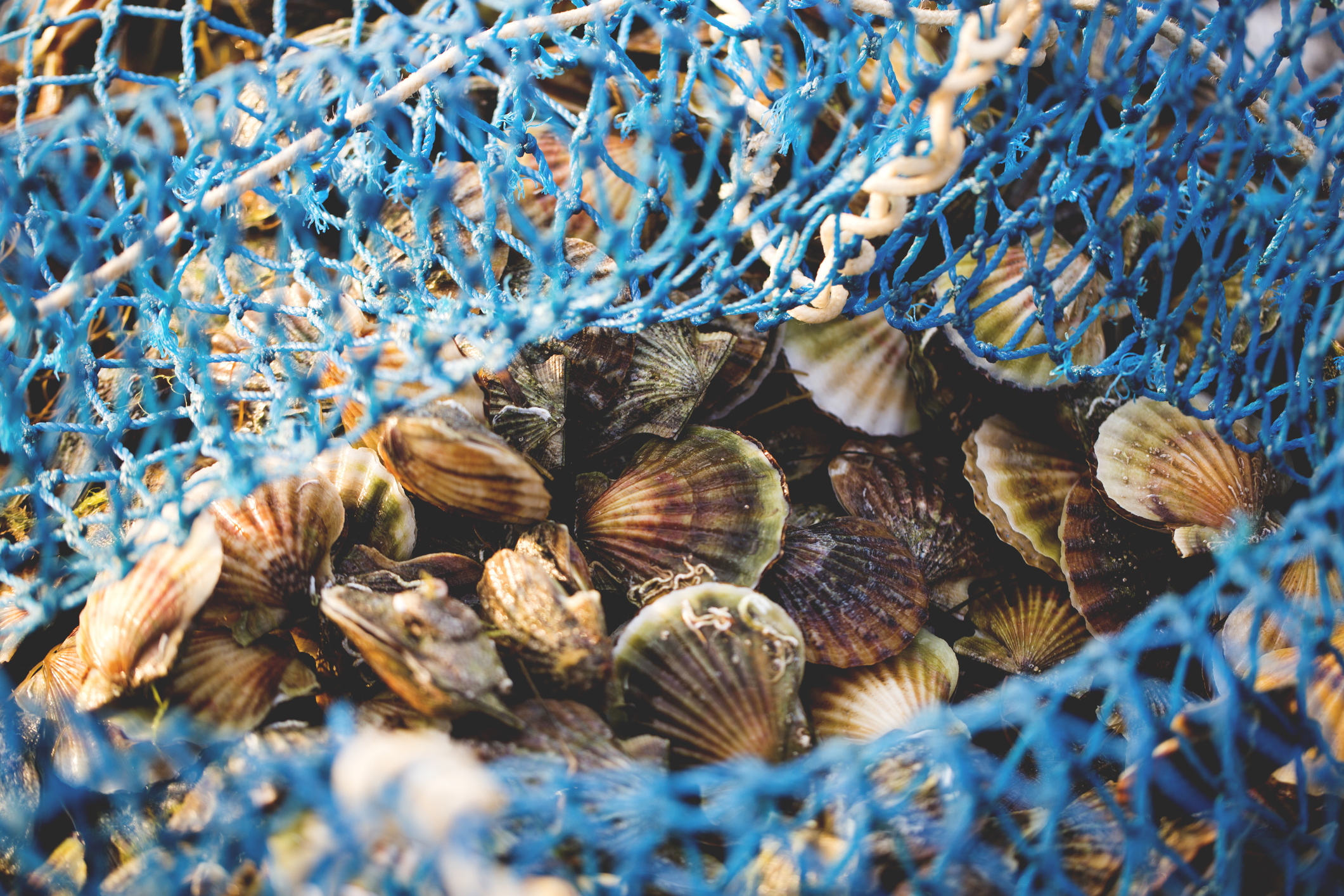Strained Scallops: Feds Declare Peconic Scallop Fishery a Disaster, But Shellfish May Rebound

Federal officials recently declared the Peconic Bay scallop fishery collapse a disaster, but marine biologists surveying the waterway believe that the shellfish are rebounding to their highest level in more than a decade.
It’s too soon to tell how well the larval scallops will survive into adulthood, and they likely won’t be grown in time for the fall harvest season. But it’s a ray of hope after last year’s collapse of the Peconic Bay scallop fishery, which was devastating news for the environment, the baymen who rely on that shellfish harvest for a living and local restaurants that serve scallops.
“Surveys of larval set show the highest level of set in 15 years,” says Chris Smith, senior educator of natural resources with the Cornell Cooperative Extension’s Marine Program. “At this point they are very small and have 18 months to go before [they are] harvested. Impossible to predict their fate at this time, but it’s a good sign.”
The scallop season usually starts in November, but the scallop die-off last year—the second in two years—shocked the East End. The Peconic Estuary stretches from the shores of Riverhead to the tips of the Twin Forks. Biologists have blamed the die-off on rising water temperatures and a parasite found in the kidneys of adult and juvenile scallops.
“The discovery of a protozoan parasite in bay scallops from Peconic Bay represents a significant threat to this commercially important fishery,” New York State Department of Environmental Conservation Commissioner Basil Seggos had said.
Dr. Stephen Tettelbach, a shellfish ecologist from the CCE, and his researchers have found similar indicators of issues that led to the deaths of the previous scallop population. Surveys conducted showed that 95% of the bay scallops died last year. Officials hatched a plan to try to restore the scallop fishery.
“We will continue to lead innovative programs to improve water quality and restore valuable shellfish populations,” Gov. Andrew Cuomo stated in a letter issued to the U.S. Department of Commerce when he requested the disaster declaration last year.
As a result, last month the U.S. Secretary of Commerce Gina M. Raimondo declared the Peconic Bay scallop fishery collapse a disaster—one of four in three states declared at the same time, including two salmon fisheries in Washington and a king crab fishery in Alaska. The declaration makes federal aid available to the baymen who rely on the scallops for their livelihood.
“Fisheries are essential to our communities and economy and we want to ensure America is in a position to remain competitive on the global stage,” Raimondo said. “These determinations allow us to lend a helping hand to the fishing families and communities that have experienced very real and difficult setbacks in the last few years.”
The agency works with the National Oceanic And Atmospheric Administration’s Fisheries unit to evaluate each fishery disaster request based primarily on data. Such determinations make these fisheries eligible for disaster assistance from NOAA. They may also qualify for disaster assistance from the Small Business Administration.
But solving the problem goes beyond loans and cleaning up the water quality. Ecosystems are rapidly changing as a result of climate change, according to the Peconic Estuary Partnership. Warmer ocean temperatures are more susceptible to the harmful effects of pollution, the excessive input of nutrients such as nitrogen and phosphorus in bodies of water, another concern for scientists and baymen.
The problem has played out across Long Island for decades. Locals recall the days when one could seemingly walk from boat to boat across the water packed with baymen that supplied half of the nation’s shellfish until the 1980s brought brown tide, a pollutant-fed algae bloom that has suffocated much of the life and economy out of the bay. Septic tanks leaching into the groundwater is among the lead causes. Nowadays commercial fishermen are nearly relics and shellfish seeding initiatives strive to help clean the bay, as mollusks are natural filters, and recreate the quintessential long-lost Long Island job: clam digger.
More recently, an intense and damaging brown tide has erupted across Great South Bay from Sayville to Patchogue. Monitoring by The Gobler Laboratory at Stony Brook University has revealed that a brown tide has rapidly intensified to more than 300,000 cells per milliliter in Patchogue Bay as of June 23.
“This is the most intense and widespread brown tide in four years,” said Christopher Gobler, the endowed chair of Coastal Ecology and Conservation in the School of Marine and Atmospheric Sciences at SBU. “The timing of the current brown tide is particularly troubling for hard clam populations, as June marks the once per year event when they reproduce, and newly spawned hard clams are highly vulnerable to brown tides. The fate of these young-of-the-year clams may rest on the duration of the current brown tide which usually intensifies through June and into July until water temperatures get into the mid-70s.”
Gobler noted that while brown tides originally occurred on both the South Shore and East End from 1985 through 1995, the Peconic Estuary has been free of this tide since 1995.
Smith, the CCE shellfish expert conducting state-funded scallop larva surveys in partnership with SBU, cautions that while the Peconic Bay scallop larva rebound is a positive sign, it may be too early to get hopes up.
“Our major concern now is if the adults survive to harvest now that they have spawned,” he adds. “Last year they didn’t. They died sometime between when they spawned in late June and September.”
Only time will tell if steps toward revitalizing the local shell fishing industry will work.
-With Maia Vines



